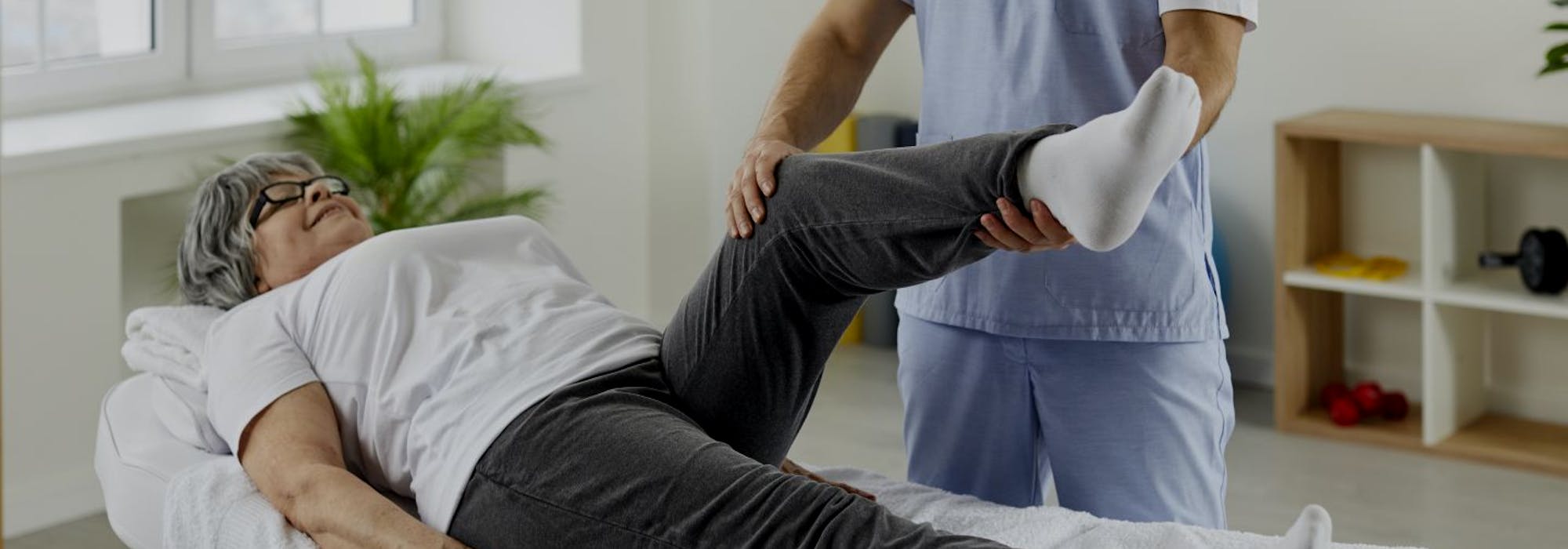Manual therapy is a “hands-on” approach to healing used by many physical therapists as part of a recovery program. It’s not the same type of treatment as chiropractic or massage therapy, although manual therapy is often mistaken for those. A Tucson physical therapist will use his or her hands instead of exercise or medical equipment to apply pressure directly to muscles or joints. The goal is to increase circulation and relieve pain from a wide variety of injury types. In fact, your physical therapist will probably use manual therapy as a method to assess an injury during your first appointment. If you have any questions about this non-invasive form of physical therapy, contact our Tucson office to set up an appointment.
Manual Physical Therapy
Manual therapy is usually divided into two different types of physical therapy: Soft tissue work and mobilization/manipulation. For soft tissue work, your physical therapist will apply pressure to (you guessed it) soft tissues, such as muscles. This has proven to be very effective in various forms of pain relief. It’s also used to break up scar tissue following surgery or an accident and to increase circulation. Mobilization/manipulation techniques are used to twist, pull, push or otherwise manipulate bones and joints into the proper position. Range of motion can be severely restricted in your limbs following an injury, so mobilization/manipulation therapies are aimed at restoring proper joint function.
Here’s A Look At Some Of The Various Manual Therapies Available And Their Applications.
High-Velocity, Low-Amplitude Thrusting
This is an aggressive manual therapy technique designed to help the joints open and close more effectively. Your physical therapist will move a joint right up to the limit of its natural restrictive barrier. This may sound intense, but it’s actually a pain-free technique. The goal is to restore the movement in a restricted joint.
Joint Mobilization
If you have a joint that you cannot move on your own, your physical therapist may employ joint mobilization. This involves loosening up a restricted joint and increasing its range of motion. The motions applied to the joint will be slow in speed, with increasing distance — right up to the natural limits of the affected joint.
Muscle Energy Techniques
Muscle Energy Techniques (METs) are used to get restricted joints moving again and to stretch out muscles that may have shortened during the recovery period after surgery or an injury. Your physical therapist will apply a direct counterforce to an arm, leg, foot or hand and then ask you to contract a muscle in a specific direction. This is repeated several times from different positions, and it allows you to work a joint or muscles with light resistance that you can’t apply on your own or with equipment. This also is considered an “active” manual therapy procedure, in which you do part of the muscle work along with your physical therapist. (“Passive” therapies are ones where the therapist does all the work, such as a joint mobilization.)
Soft Tissue Mobilization
Soft Tissue Mobilization (STM) is a passive technique applied by a physical therapist. This is similar to massage therapy and is most commonly used to break up inelastic muscle fibers, like those you would see in scar tissue. It can also relieve muscle tension and move tissue fluids around. Deep pressure is usually applied to the muscles along the spine, for example, when dealing with pain associated with a back injury or surgery.
Strain–Counterstrain
When a neuromuscular reflex is abnormal, it can cause problems with a person’s posture or with muscle structures. Strain–counterstrain techniques allow the patient to engage in mild stretching with the aid of a physical therapist to “reset” the way that muscles react. This technique is gentle enough that it can even be used to treat severe back pain.
If you’re suffering from ongoing pain after an injury or surgery, don’t try to “wait it out” or see if things will eventually heal on their own. Manual therapy and other physical therapy techniques can help restore the quality of life that you deserve. Contact our Tucson, AZ office to set up an appointment with a physical therapist today.


